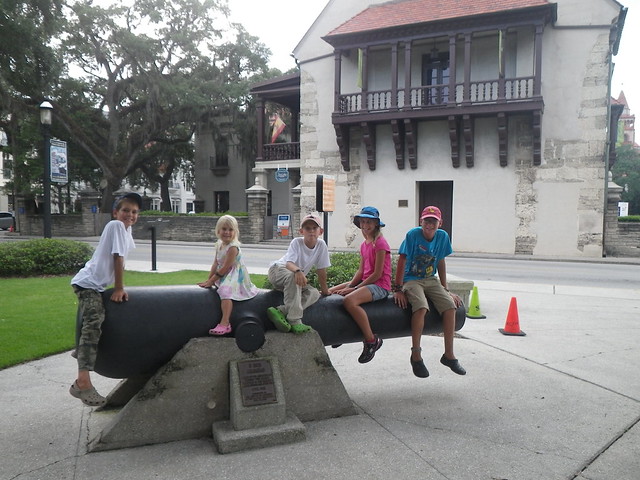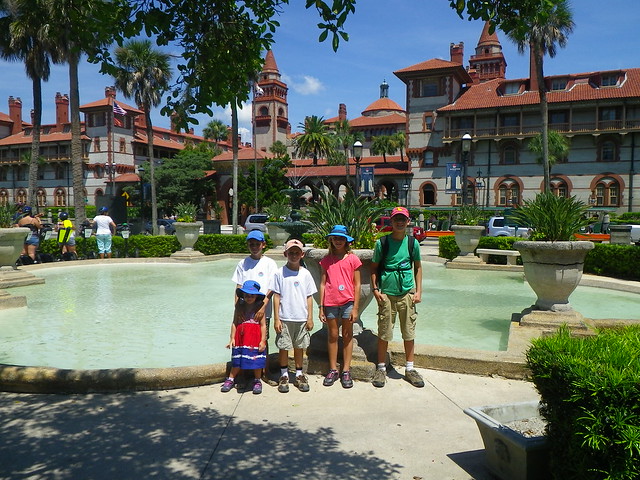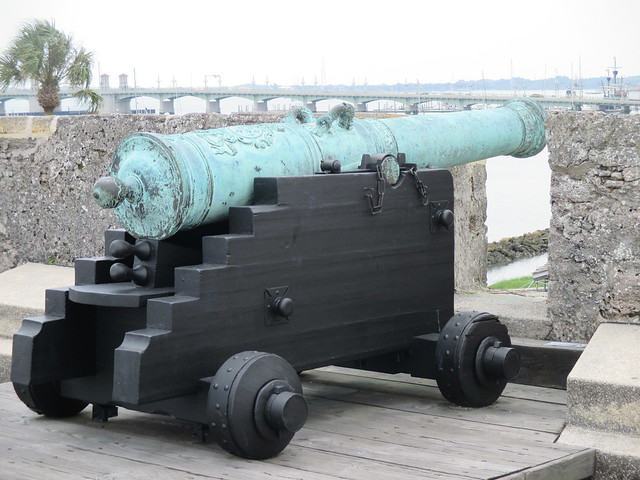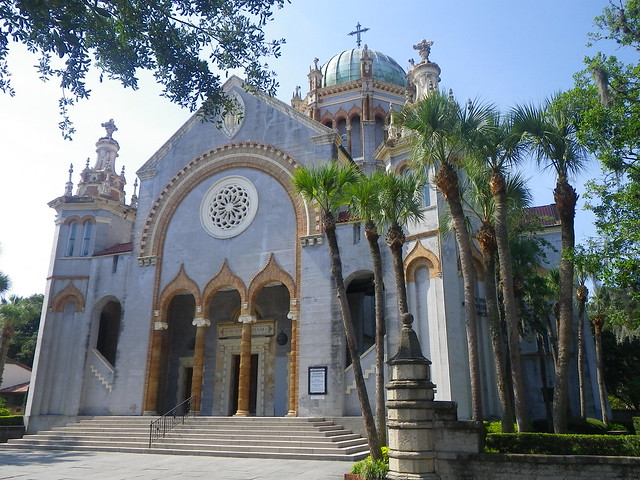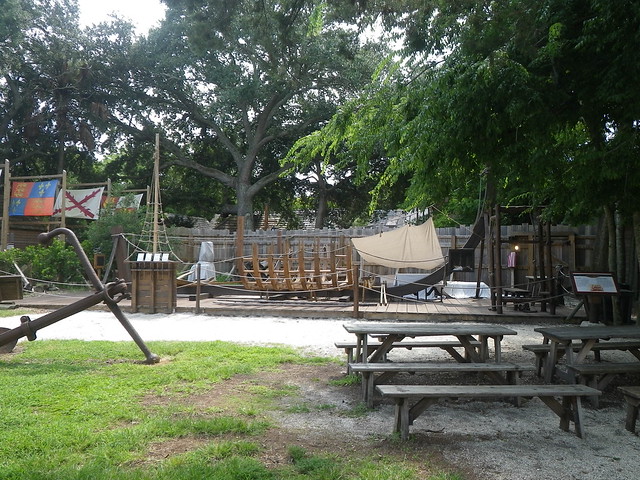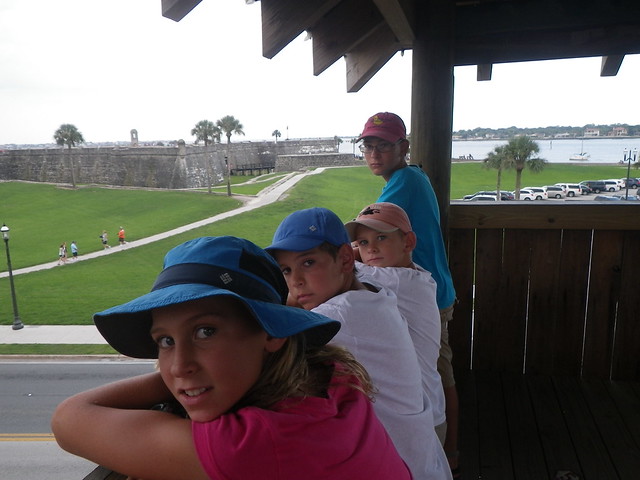August in St. Augustine |
Monthly Archives: August 2014
Rachel Swims! |
One of the most important milestones in our home is the day a child learns to swim. This, of course, is so that we don’t have to worry so much about little people going outside and falling into our front yard. Rachel has been in the water since she was days old—her swim lessons started with the teaching of survival skills, like floating on her back. When she fell off the dock last year, she did not panic, but popped to the surface and waited for help (only seconds away in that case). Since then, she has been a lot more careful on docks, and we have been pushing the swimming. By age two, she had all the requisite skills: floating, kicking, holding her breath, forward motion using her arms—but she had not put them all together. She would jump in the water, swim underwater until she ran out of air and we’d fish her out, spluttering. This summer, she added “coming up for air” to her repertoire. We’ve had access to a pool for the last couple of weeks, and her swimming has really improved. She’s comfortable jumping in the deep end and getting herself back to the ladder. I can tell you, we’re all celebrating that achievement and will sleep a little easier knowing that she’s joined our amphibious crew.
FAQ: How do you handle storms at sea? |
People often comment that we are brave to do what we do. If what they mean by brave is feeling afraid, but refusing to be ruled by fear, I might agree. One of the chief fears people have about boats is encountering storms at sea. We can often choose the weather in which we depart, but cannot control the weather we experience once offshore. And once you’re in it, like the children’s chant says, “you can’t go over it, you can’t go under it—you’ve got to go through it.”
Summer weather in Florida is pretty predictable. Except for during hurricanes (which you can plan and prepare for), the daily weather forecast is about the same. There are land and sea breezes which take shifts, a middle-of-the-day lull, and afternoon thunderstorms which can pack a mighty punch (we’ve seen wind speeds of up to 65 knots). Tied to a dock, these approaching storms are fun to watch—the cumulonimbus clouds building and billowing, the wind shifting and howling, and rain that is more waterfall than shower—all except for the lightning, which is indiscriminate and always terrifying if you live in a home with a 68-foot metal pole on top. At sea, I can attest, these storms are not to be trifled with.
I never feel more alive, or rather, more aware of the fragility of my life, than at sea in rough weather. I may be one of those rare, sick-minded people that feel a sort of exhilaration, even joy, in the midst of these storms. If I can’t control it, I can at least appreciate it. The wild beauty of foaming wave-tops, lightning that glows white-hot or pinkish-blue and hurts your eyes for its brightness, thunder that you can feel and not just hear—these are awesome forces to behold from the deck of a wave-tossed boat.
The children, sensing a change in the weather, naturally look to us for cues as to how to respond to what sometimes feels like an emergency. We may rush around for a few moments stowing loose objects, digging out rain gear, taking down sails, and starting an engine. But then I do something mundane, like wash dishes or read aloud, to send the message that it’s business-as-usual. If people feel fearful, we pray, and retell the Bible story of Jesus calming the storm with a few words, and wondering at the lack of faith in his anxious disciples. This story restores confidence, if not fearlessness, because it reminds us that we know the Maker of these forces and that we find ourselves in His capable hands, come what may.
Jay, as the captain, is usually at the helm in his foul-weather gear trying to keep the boat at a comfortable angle to the wind and waves. I can only imagine what impression this leaves on our young children, especially boys beginning to get a glimpse of manhood, to see their capable Dad seemingly in control, keeping his family safe and exuding calm and quiet. In reality, we dread sailing in rough weather. It is humbling and physically uncomfortable. But we also know that these experiences are making us tougher and more capable sailors. At the very least, our grandchildren will be regaled with good stories, because, as we have remarked before, it’s never the calm, quiet, boring days which make for good stories.

